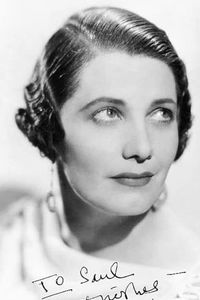Mary Morris, a highly acclaimed and accomplished American stage actress, embarked on a remarkable and storied career that spanned numerous years, marked by numerous performances and appearances on the stage, leaving a lasting impression on the world of theatre and entertainment.
Born on June 24, 1895, in a world filled with possibilities and promise, Mary Morris was the daughter of George Perry Morris and Martha Sophia (née Turner),a family that instilled in her a strong sense of determination and a passion for the performing arts.
Destined for greatness, Mary Morris's early life was filled with opportunities to hone her craft, and she seized every moment to learn, grow, and develop her talents, laying the foundation for a career that would be marked by excellence and distinction.
Morris's academic trajectory began with a formative educational experience at the renowned Brookline, Massachusetts Public Schools, laying the groundwork for her future pursuits. Her academic journey continued with a prestigious stint at Radcliffe College, where she further cultivated her intellectual and artistic inclinations.
Meanwhile, Morris's earliest forays into the world of theater commenced with amateur performances at the esteemed Bandbox Theatre, providing her with a valuable opportunity to hone her craft and develop her artistic talents. These early performances served as a crucial stepping stone, allowing her to refine her skills and gain valuable experience in the world of theater.
As the years went by, Morris's talent and dedication earned her a coveted spot as an understudy with the esteemed Washington Square Players, a renowned troupe that offered her a wealth of invaluable experience and exposure.
Her professional debut with the WSP finally arrived in 1916, marking a significant milestone in her career, as she took to the stage in San Francisco with a captivating performance in the production of The Clod, a memorable and impactful role that showcased her remarkable abilities to the audience.
Notwithstanding her captivating on-stage charisma, the cinematic endeavors of this particular individual were surprisingly restricted to a solitary notable appearance in the 1934 film production of Double Door. As a consequence, her name has, unfortunately, become somewhat obscure to contemporary audiences, thereby diminishing her recognition and legacy within the realm of popular culture.















